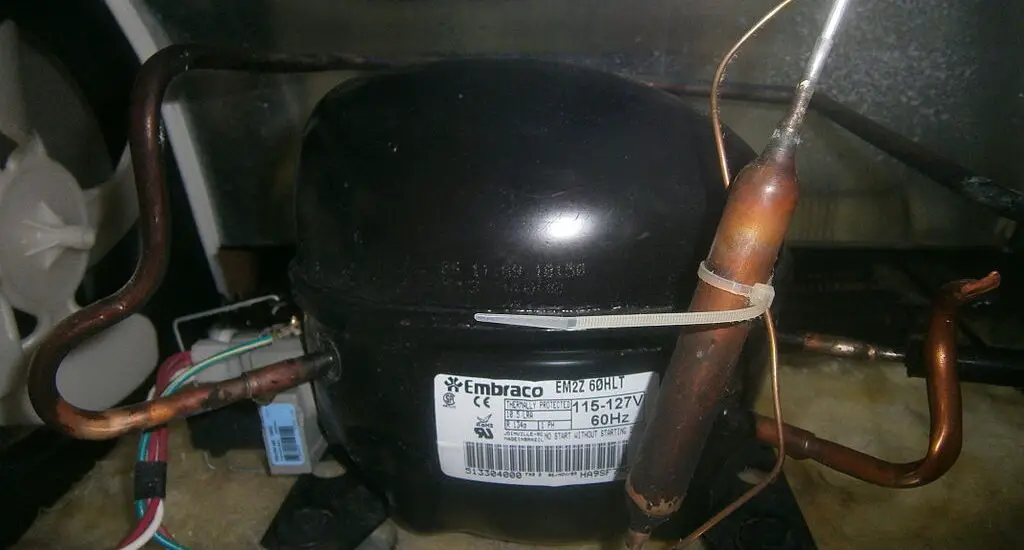If you find that your refrigerator compressor does not turn on, this comprehensive guide will walk you through every aspect of diagnosing and fixing the issue.

Table of Contents
Identifying the Issue with Your Refrigerator Compressor
The very first step to resolving the problem is figuring out the nature of the issue. Is it electrical or mechanical? Understanding this will guide your next steps. So, here’s how you make that initial assessment:
Unplug the refrigerator: Always unplug the appliance from the wall socket before starting any diagnosis or repair. This is critical for your safety.
Wait for 2 minutes: It’s recommended to wait for a couple of minutes to ensure all stored electrical charges within the appliance have dissipated. This process is a reset mechanism that sometimes helps the compressor to restart if it’s stuck due to electrical surges or drops.
Plug it back in: Reconnect the refrigerator to the electrical outlet. Stand close enough to listen carefully for any sounds from the back of the refrigerator, where the compressor is usually located. A working compressor emits a low humming noise when it’s active. No sound often means there’s an issue.
Testing the Electrical Components
If you don’t hear the hum or any other sound, the issue may be electrical. An appliance as complex as a refrigerator has multiple electrical points that could be the culprit.
Test the power outlet: To rule out issues with your home’s electrical supply, unplug the refrigerator and plug another small appliance or device into the same socket. If the device works, you know the socket is good.
Inspect the power cord: Check the refrigerator’s power cord for any visible damages like fraying, cuts, or exposed wires. A damaged cord could be the reason the electrical flow is interrupted.
Examine internal circuitry: Locate the circuit board, usually situated at the back of the refrigerator. Open the panel using a screwdriver (always make sure the appliance is unplugged first). Look for any blown fuses, tripped breakers, or loose wires. These could disrupt power flow to the compressor. If you’re uncomfortable doing this, consult a technician.
Mechanical Components and Fixes
If the electrical components are in good shape but the compressor is still not working, the problem might be mechanical. Here’s how to troubleshoot these components:
Manually check the compressor: With the appliance unplugged, locate the compressor at the back of your refrigerator. Try to manually rotate the fan blades connected to the compressor. If they’re stuck, lubrication might be needed, or there may be a more severe issue with the compressor itself.
Inspect the cooling fan: The cooling fan aids the compressor in maintaining low temperatures. If it’s blocked or not spinning freely, it can affect the compressor. Clear any obstruction and clean the fan blades.
Check the thermostat: A faulty thermostat can fail to signal the compressor to activate. Turn the refrigerator’s thermostat to the coldest setting. If the compressor doesn’t turn on, the thermostat might need replacing.
Check out these other articles...
Refrigerator Compressor Banging Noise: 3 Quick Fixes
Refrigerator Compressor Bangs When Shutting Off: Easy Fixes
Refrigerator Compressor Clicks But Won’t Turn On: Solved
Refrigerator Compressor Disposal: A Step-by-Step Guide
Refrigerator Compressor Discharge Line: Complete 411 Guide
When to Call a Professional
If after going through these steps your refrigerator compressor does not turn on, it’s prudent to consult a professional technician. Some issues require specialized tools and expertise to be resolved safely and effectively.